Workday Staffing Model: Position and Job Management in Workday HCM
The Workday Staffing Model is a core concept of Workday HCM, which defines how jobs and positions are created and filled in supervisory organizations. It consists of two types: Position and Workday Job Management.
The Workday Staffing Model is used to assign organizations to workers, ensuring that they are assigned to the right Workday organization.
The approach to filling supervisory Workday organizations is based on the Workday Staffing Model, which helps ensure that each person is assigned to the right Workday organization.
Workday Position management involves defining the characteristics of each position, which gives you control over the number of people who will be occupying the position.
This includes determining the type of worker, whether they are full-time or part-time, location, qualifications, Workday language skills, Workday certifications, and experience. This allows you to know exactly the kind of person who will come in and occupy the position.
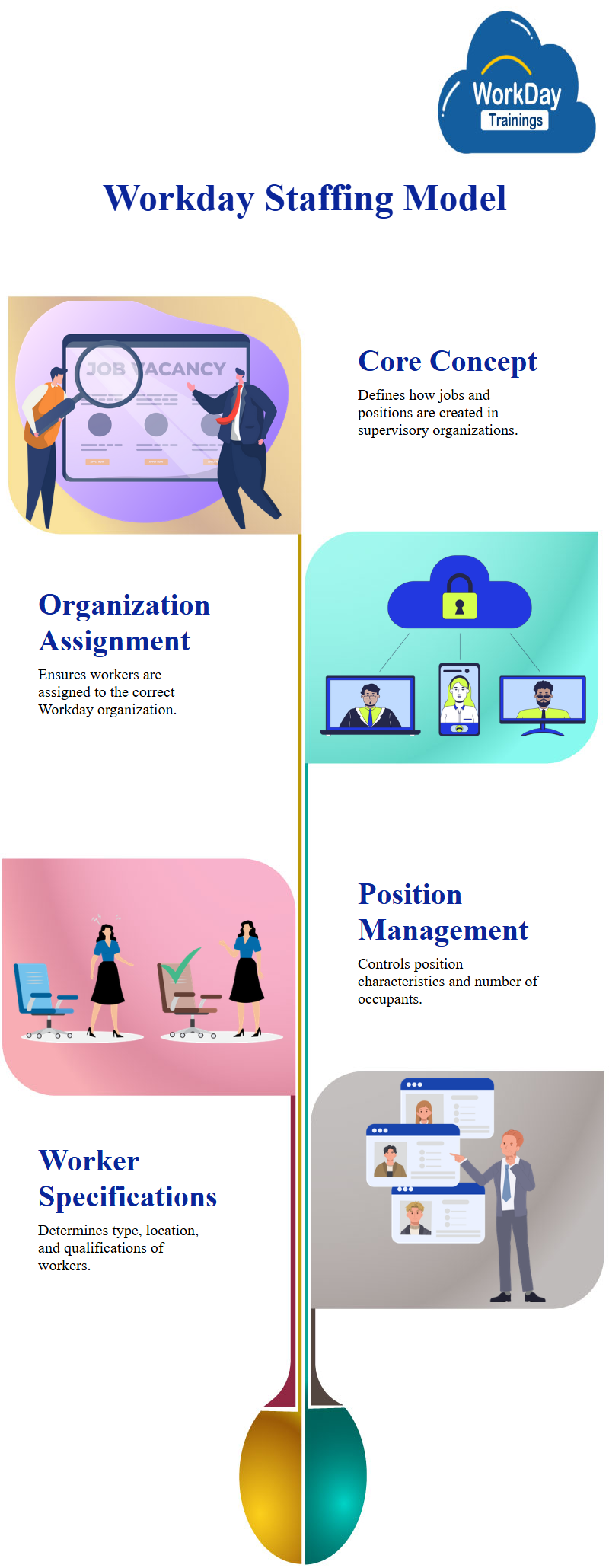
Effective Workday resource management: Position Workday vs Workday. Job Management
However, if a position management system is used, there are still unfilled positions, leading to operational overheads. Management may ask about the situation, unsure why the positions were opened in the first place and whether to close them later.
This can lead to Workday questions about the necessity of the positions and the need to consider whether to close them.
Hiring restrictions are set at the position level in position management, while Workday hiring restrictions set at the Workday supervisory organization level for job management.
This highlights the importance of considering both job management and position management in managing organizational resources effectively.
Position management and job management are two types of hiring restrictions set at the supervisory organization level.
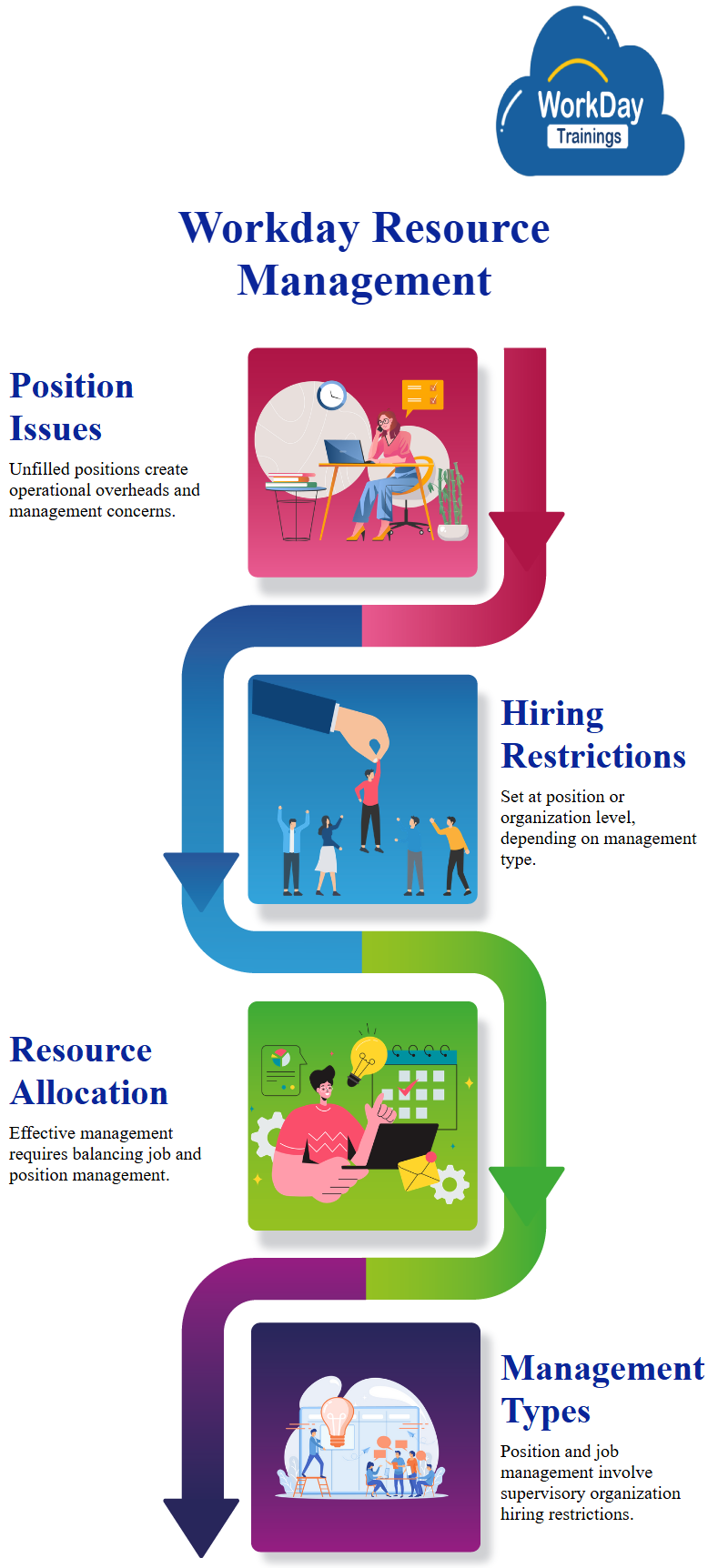
Position management allows for the creation of specific positions and hiring rules and restrictions, similar to how diplomatic-level parties have name tags placed in front of chairs. These rules and restrictions are determined upfront, ensuring that everyone is assigned to the right position.
However, position management can be overwhelming and time-consuming. It is best used when defining each position to the minute detail, based on location and job requirements.
It is subject to tight hiring controls, and it is also an overhead. For example, a Workday company like TCS, which hires 30,000 to 40,000 freshers annually, may Workday benefit from position management.
In contrast, a specific Workday integration architect may require a larger workforce to create positions. This can lead to a higher overhead and a more complex process for hiring.
Therefore, it is essential to weigh the benefits and drawbacks of each type of hiring system before deciding whether to use position management or job management.
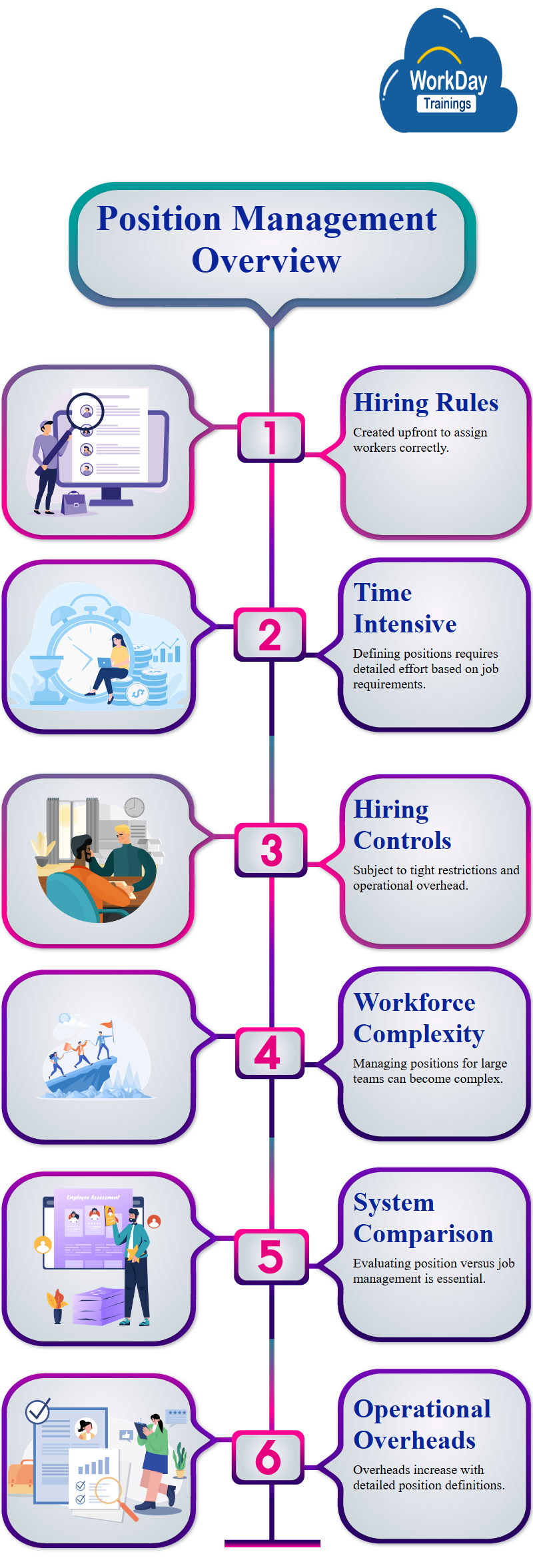
Organizing XYZ Motors: A Step-by-Step Tutorial on Hiring for Supervisory Organizations
The Workday tutorial discusses the assignment of creating a Workday organization structure XYZ Motors, which includes four Workday supervisory organizations.
They provide a solution for the structure, including the hiring of a Workday manager, inherited Workday manager, and subordinates. The Workday tutorial then demonstrates how to hire a worker for both job management and Workday Position management organizations.
Task Completion and Approval in Business Processes
The business process is initiated when a green tick mark is displayed, indicating successful completion. The process is expanded to view details and the employee type is regular. The supervisory organization is called, and the details are displayed.
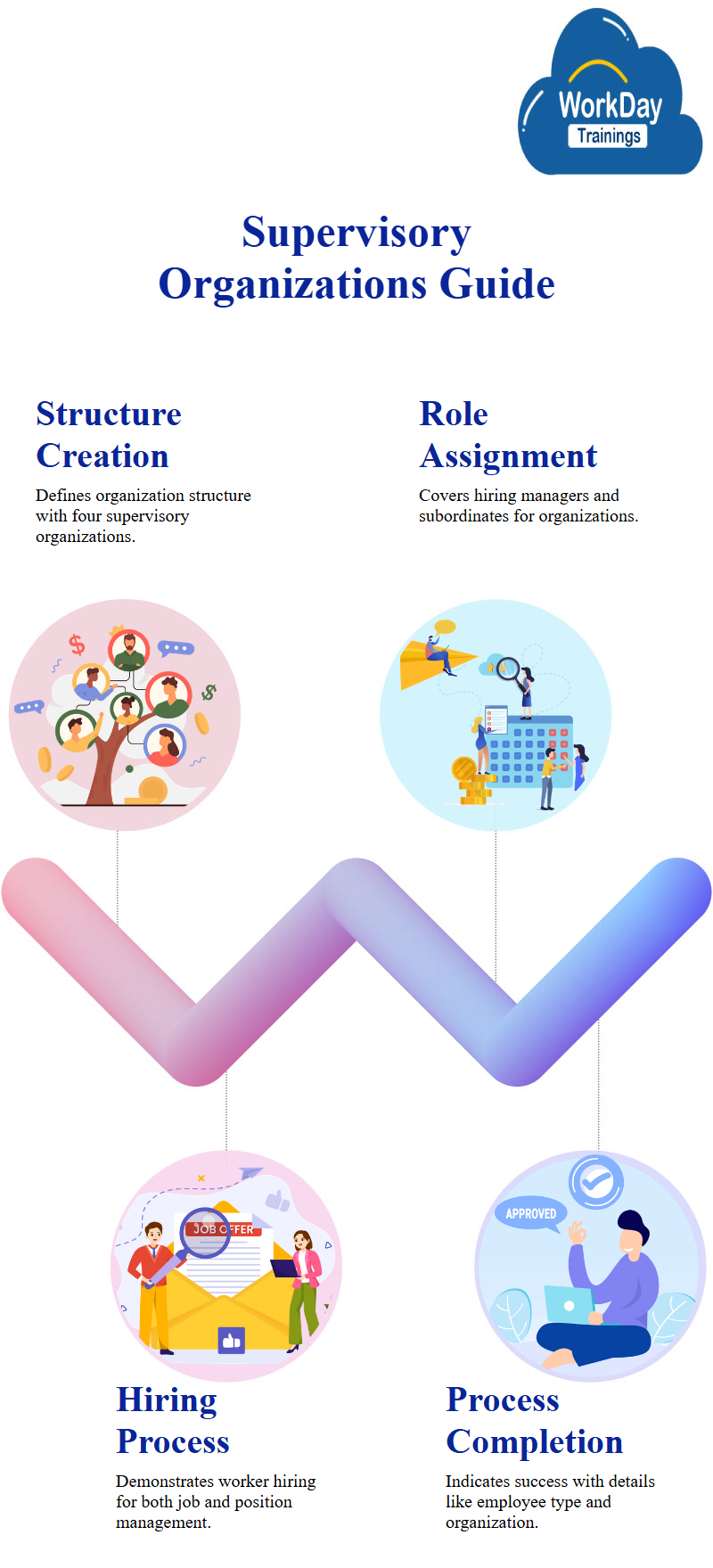
The location and time profile standard hours are selected. The additional information comes from the job profile, which was created yesterday. The process is successfully completed, and the first task is complete.
The Workday supervisory organization, XYZ Motors, now has a member, Daniel Sloane, and the first task is complete. Before approval, the business process is viewed through the member, eliminating the need for approvals.
Simplifying the Hiring Process: A Guide to Avoiding Errors.
The hiring process is a simplified version of the business process, with no approvals required. The process is designed to be simple and realistic, with only one step required for initiation. However, errors may occur if the process is not defined properly or if Workday roles are not set correctly.
To avoid errors, the process should be created with a copy of the business process and followed correctly.
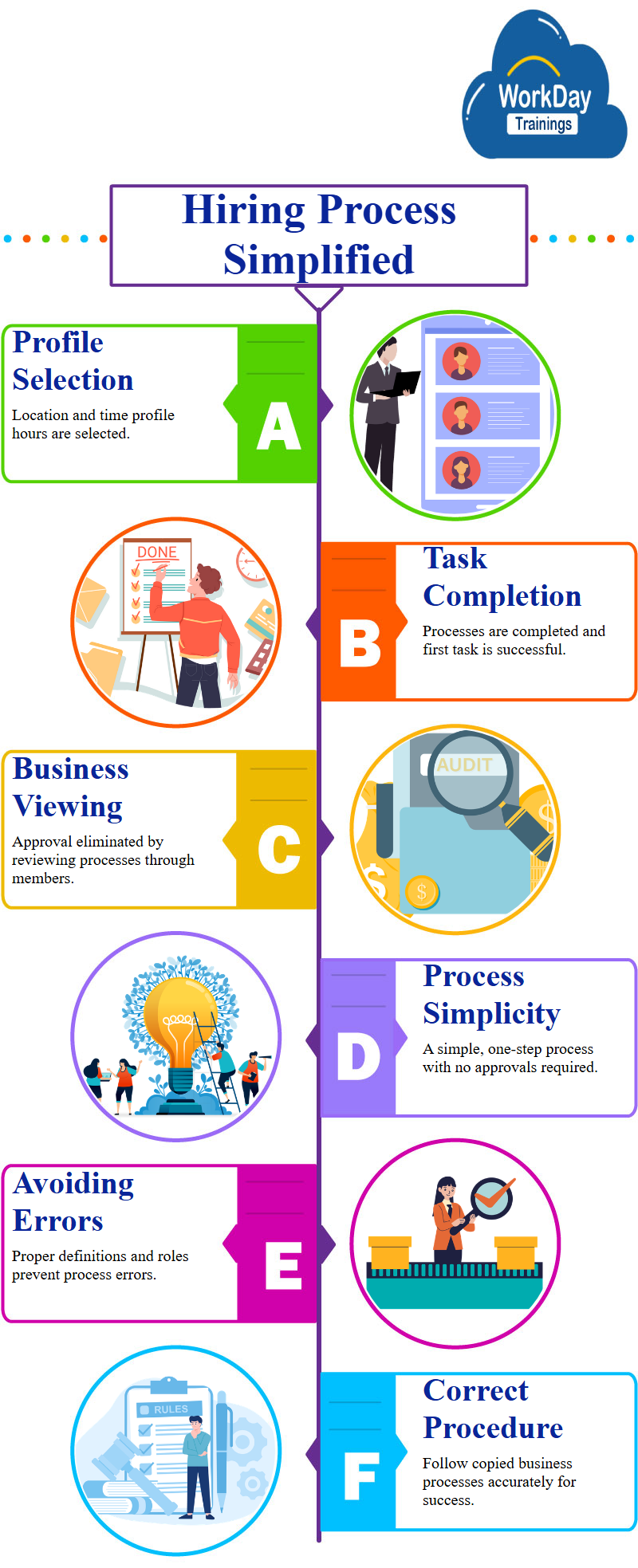
Hiring a Training Manager: A Job Management Organization’s process
Considering A job management organization where a Workday training manager is hired. The job is a new hire, and the employee type is selected as regular. The job profile is a Workday training manager, and the contact information is provided.
The hiring process is then initiated, and the job is marked as open. The employee type is selected as full-time, and the location is specified. The job is then resumed, and the position is rescinded. The staffing model is changed, but the process can be tedious.
The Workday salary type is inherited as Workday salary due to the specified pay type in the job profile. The hiring process is then completed, and the details like contact information and location are entered. The values for full-time and location are sourced from the job profile.
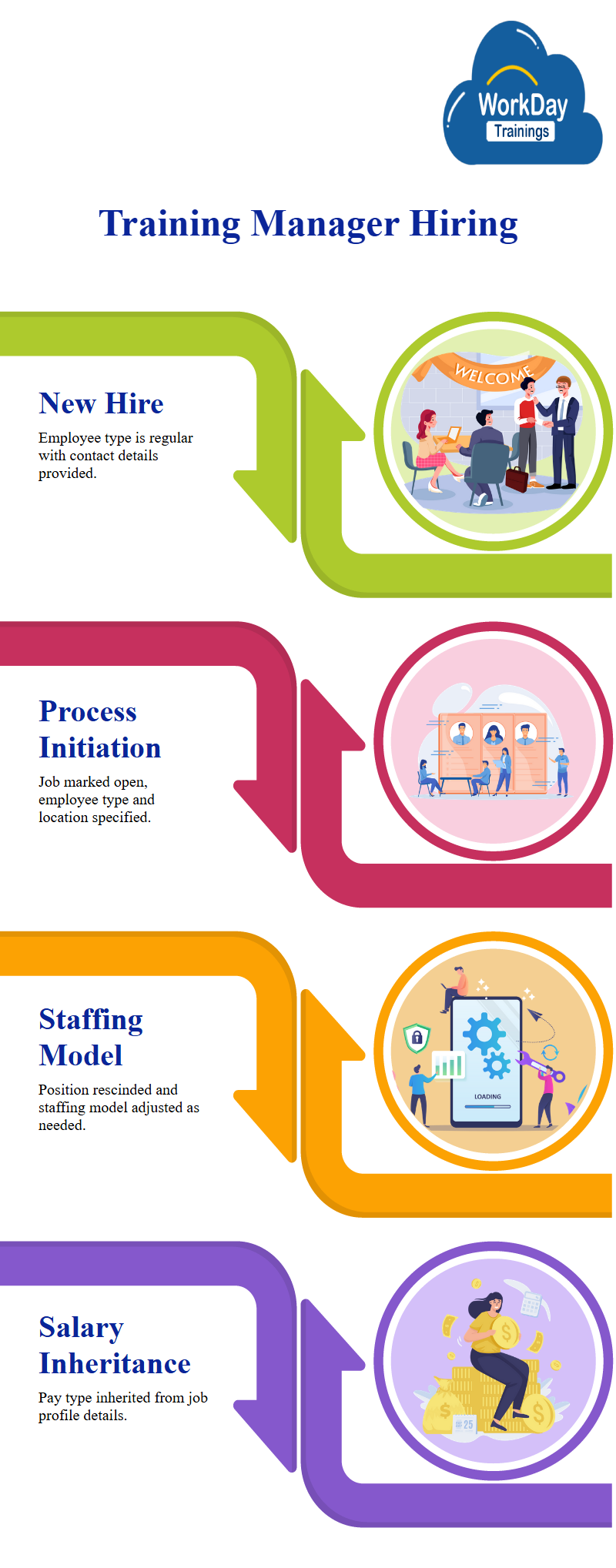
Customizable Business Process for Organization Assignment and Hiring Restrictions
The business process will provide an editable option for assigning organizations, such as nature, partner, or Workday compensation partner, to users. This allows them to choose something other than the default values, which are defaulted.
The job management system will allow users to change the hiring restrictions, such as the availability date or the earliest higher date if they want to hire for a specific organization. This can be done by freezing the hiring process or putting the organization under hiring trees.

Position Management Workday vs Workday. Job Management: Accountability in Hiring Processes
In a situation where there is no limit on how many people can be hired, there is no controller or control. This is a key difference between position management and job management. In position management, there is a clear idea of how many positions are created, allowing for proper audit and accountability.
However, in job management, there is no limit on the number of people hired. To maintain accountability, the hiring process moves from creating the position to the higher process, which requires verbal approval from higher authority.
This process is not maintained during the Workday work day but outside of it. The goal of management is to maintain flexibility and speed, while job management allows for flexibility and speed. The topic ends with Chiller working on an assignment over the next three days, urging her to make progress and avoid falling behind on assignments.

Harsha
New Technology, let's explore together!

